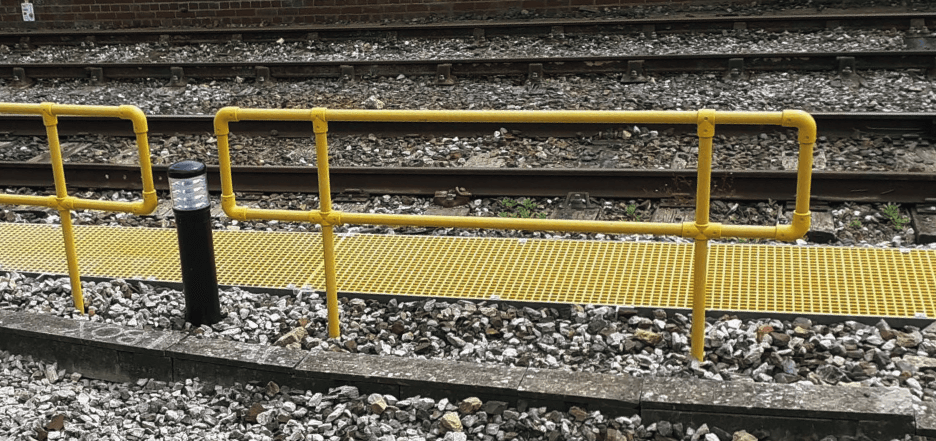What is GRP?
GRP, also known as GFRP, is a composite material composed of glass fibres that are bonded together with resins such as Polyester or Vinyl Ester.
This combination creates an exceptionally durable material with a long lifespan and minimal maintenance requirements.
Why is GRP Dominating the Rail Industry?
One key factor contributing to GRP's dominance in the rail industry is its high resistance to electrical conductivity. This makes it a popular choice for installing along maintenance and driver walkways, embankment steps and more.
GRP's excellent gritted surface also significantly reduces the risk of accidents from slips, trips and falls. This feature is crucial in potentially cold and slippery environments.
In fact, slips, trips and falls account for a significant percentage of workplace accidents overall. With the installation of secure flooring systems like GRP gratings, any industry can dramatically minimise these risks.
The Importance of Non-Conductivity
Electrocution is a severe and potentially fatal injury. A recent incident involved a railway contract worker who suffered extensive third-degree burns to their entire body due to a 25,000-volt electrical shock. The injuries resulted in skin grafts and partial loss of sight and hearing.
Such life-changing injuries not only impact the workers but also the reputation and financial standing of rail companies and contractors. For instance, Amey Rail was fined over half a million pounds due to an electrical shock accident.
In response to such incidents, Network Rail and the Office of Rail and Road (ORR) now require the presence of non-conductive structures around live tracks. This includes platforms, handrails and walkways to prevent similar accidents from occurring.
ORR and Network Rail Requirements
A recent document from the ORR states that "all reasonable opportunities must be taken to provide safe access routes, platforms, fixed fencing and barriers to prevent persons coming into close contact with live conductors."
Network Rail has specific standards and requirements related to the use of GRP in rail applications. While the exact standards may evolve over time, some common guidelines and considerations include:
Non-Conductivity: Network Rail emphasises the need for non-conductive structures near live tracks to prevent electrical incidents. Because GRP is a non-conductive material, it is well-suited for applications within the areas mentioned above such as platforms, handrails, and walkways, as well as a diverse range of structures where contact with live conductors occurs.
Fire Performance: Network Rail has specific fire performance requirements for materials used in railway applications. GRP materials intended for use in rail infrastructure must meet the necessary fire safety standards to ensure they do not contribute to the spread of flames or release toxic gases in the event of a fire.
By adopting GRP materials and structures, rail companies can meet Network Rail standards, enhance safety, optimise infrastructure performance and ensure compliance with industry regulations.
What products do we supply:
At Lockinex, we offer a diverse range of GRP products designed for various rail applications. Our GRP gratings, ideal for driver walkways, maintenance platforms and catch pit covers are made from Isophthalic Polyester resin specifically crafted for industrial usage, ensuring durability in harsh railway conditions.

Conclusion:
If you have any queries or would like to learn more contact our sales team via email or call us on 01323 737 626 to speak to a member of our team today.
References
https://www.orr.gov.uk/search-news/amey-rail-limited-fined-following-electrical-shock-injury-worker





